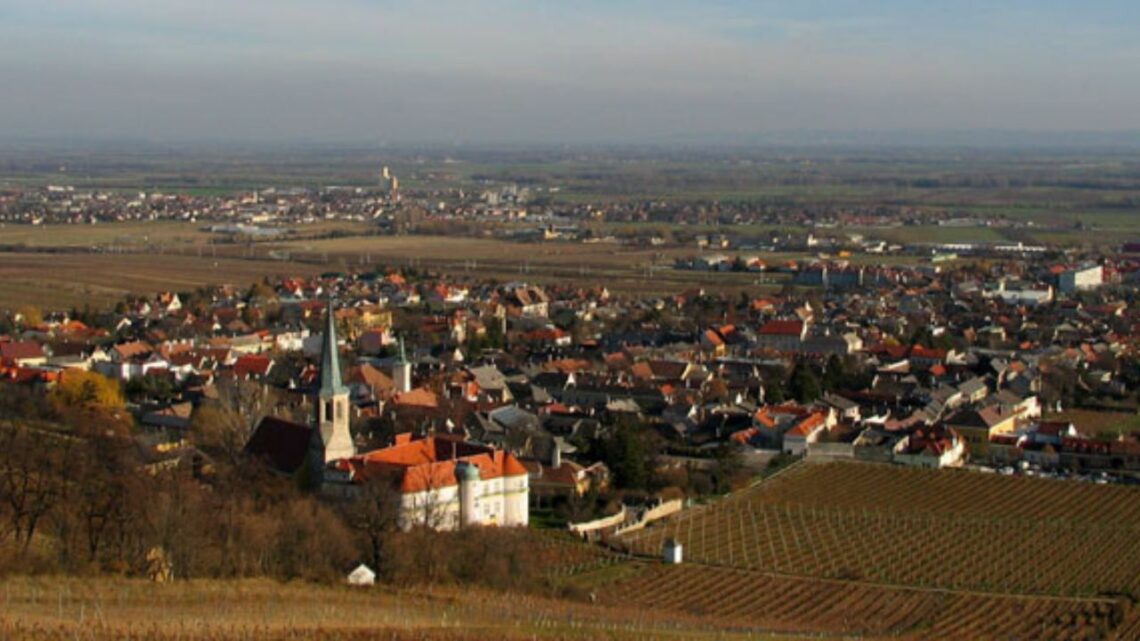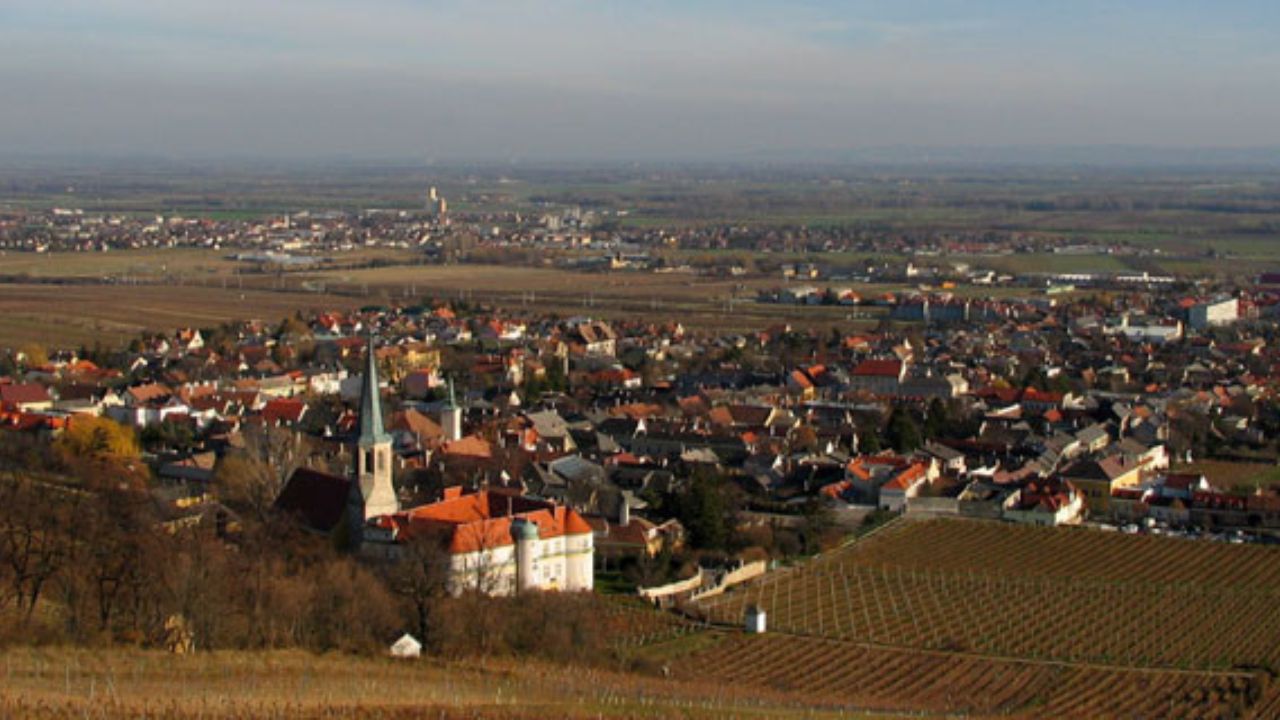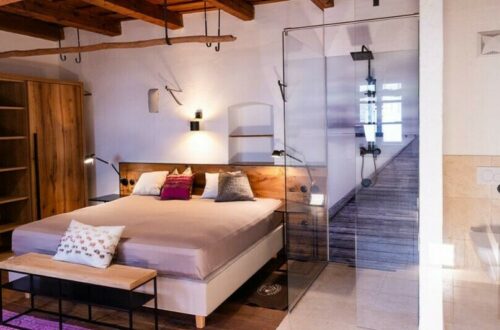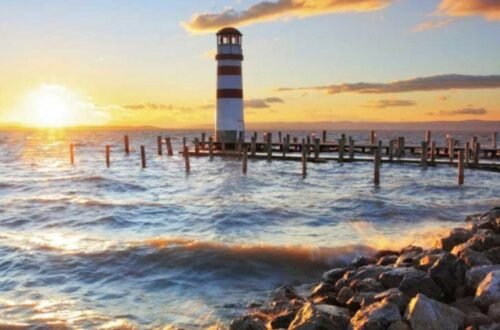
Thermenregion wine
The Thermenregion wines’ history goes back the Middle Ages. Notable designations of origin such as Gumpoldskirchen for white wines and Vöslau for red wines rime with exceptional quality.
A significant turning point occurred in 1985 with the introduction of the new Austrian wine law, ushering in a new era for the region. Gumpoldskirchen and Bad Vöslau merged together to form Thermenregion, uniting their viticultural traditions and expertise.
Concerning grape varieites, Thermenregion stands out as the birthplace of two distinctive Austrian grape varieties, Rotgipfler and Zierfandler.
Sunshine, history, and delicious wines! The Thermenregion, south of Vienna, has been making wine for over 2,000 years. Think hot springs, 2,000+ hectares of vineyards, and unique grapes like Saint-Laurent and Zierfandler. They also grow classics like Grüner Veltliner and Pinot Noir. Looking for a great bottle? Check out wineries like Karl Alphart or Johanneshof Reinisch.
History of Thermenregion
For over 2,000 years, vines have been cultivated in the favorable climate of the region south of Vienna. Roman legionnaires stationed in Carnuntum and Vindobona introduced vines from their home regions and their viticultural expertise to Pannonia.
During the Middle Ages, viticulture flourished under the guidance of Cistercian monks. The establishment of vineyards and the character of the villages clearly illustrate the influence of the original Cîteaux monastery in Burgundy.
The Thermenregion wine-growing area encompasses 2,181 hectares of vineyards. In the northern part, it is known as one of Austria’s most renowned regions and takes its name from the village of Gumpoldskirchen, which used to enjoy a similar reputation to Rust or Tokaj.
The designation as Thermenregion refers to the hot sulfurous springs of Aquae (Baden). Just south of Gumpoldskirchen are the spa towns of Baden and Bad Vöslau.
Nature and culture offer a diverse range of leisure activities, such as visiting the Freigut Thallern estate belonging to the Cistercian collegiate church Stift Heiligenkreuz, one of Austria’s oldest vineyards, the spa and cultural town of Baden with theater, operetta, wellness, or grape cure, wine route excursions to authentic farm inns, or hiking through vineyards along the mountain spring water pipeline from Vienna.
Terroir : soil and climate
In terms of soils, limestone and fossil limestone are predominant, with bands of sandy loam or brown loam.
The vineyards are not terraced but are planted on slopes, which makes them challenging to work but exposes the grape clusters to both morning and afternoon sun. Moreover, the lower slope deposits contain gravel and facilitate water drainage and warming.

Around Tattendorf, the soils are alluvial and gravelly, with little topsoil but excellent drainage. They warm up quickly in hot weather but are cooled by the chilly winds flowing down from the Anninger hills at night. Frost can be a problem.
ANECDOTE : Hannes Reinisch has a great solution for that… Well perhaps not environmentally speaking though. He tackles this by flying a helicopter over the vineyard every fifteen minutes, which raises the temperature by 2 degrees.
Klosterneuberg owns the largest Saint-Laurent vineyard in Austria. One of the most celebrated vineyards is Frauenfeld, with alluvial stony soils rich in limestone and a topsoil of black earth, making it excellent for cultivating Saint-Laurent grapes.
The hills provide protection from cold wet weather and hail, while the nearby Pannonian plain, extending into Hungary, has a strong influence, resulting in 1,800 to 2,000 hours of sunshine. The cool air from the hills helps preserve acidity in the wines.
The major centers for red wine are the municipalities of Bad Vöslau, Sooß, Tattendorf, and Teesdorf, while classic white wines come from Perchtoldsdorf, Gumpoldskirchen, Pfaffstätten, Baden, Guntramsdorf, and Traiskirchen.
Grape varieties in Thermenregion
In the area between Wiener Neustadt and Tattendorf, Saint-Laurent is widely grown. The gravelly plains around Tattendorf and the slopes around Gumpoldskirchen have distinct characteristics.
The region’s best varieties include Rotgipfler, known for its tropical fruit characters, and Zierfandler, which exhibits tension and the potential for noble rot. The BA (Beerenauslese) and TBA (Trockenbeerenauslese) wines from Gumpoldskirchen tend to have more acidity compared to those produced near Lake Neusiedl.
Grüner Veltliner has largely taken over, which is unfortunate (I mean don’t we have enough with the Wachau, Kamptal, Kremstal, Weinviertel?), although top producers have not given up on Rotgipfler and Zierfandler, with 128 hectares and 82 hectares respectively. These varieties are planted along the slopes of the Anninger hills at elevations ranging from 200 to 300 meters.
In Steinfeld, poor gravel soils offer optimal conditions for red wine varieties. The typical regional white grape varieties, Zierfandler (Spätrot) and Rotgipfler, thrive here and are blended after harvest to form the legendary Spätrot-Rotgipfler blend.
Among the traditional variety diversity are also Blauer Portugiese, formerly known as “Vöslauer,” or Neuburger, as well as modern wines from the Pinot family (St. Laurent, Pinot Noir), along with Zweigelt, Merlot, and Cabernet Sauvignon.
Thermenregion DAC
Thermenregion finally earned its “DAC title” on the 1st of June 2023. It is the 18th DAC which completes the family!
Within the Thermenregion DAC, the pinnacle of quality is represented by Riedenwein, a single-vineyard wine that is made from grape varieties like Zierfandler, Rotgipfler, St. Laurent, Pinot Noir, Pinot Blanc, and Chardonnay.
Occupying the middle tier of the DAC classification is Ortswein, also known as villages wine, which includes the aforementioned grape varieties as well as Pinot Gris and Zweigelt (Rotburger).
The DAC villages within the Thermenregion encompass Perchtoldsdorf, Gumpoldskirchen, Tattendorf, Wiener Neustadt, and Bad Vöslau.
Furthermore, the region offers regional wines labeled as Gebietswein Thermenregion DAC, which encompass the aforementioned grape varieties in addition to Neuburger, Gemischter Satz (a field blend), and Blauer Portugieser.
Wineries in Thermenregion
Now to the wineries!
With a history dating back to 1796, the Karl Alphart estate offers an impressive range of excellent Rotgipfler wines. Their collection includes various cuvées from Rodauner, such as the “Vom Berg,” which serves as their most basic offering. Additionally, their “Top Selektion” is crafted from old vines, partially fermented and aged in 30% new oak, while their “Pur” undergoes an aging process of 11 months in barriques and contains a minimum of 18 grams of residual sugar, although it is not produced every year. Their sparkling wine is great too!
Biegler specializes in Rotgipfler and Zierfandler wines, typically featuring around 6 grams of residual sugar. The wines’ acidity is kept sufficiently high to avoid any perception of excessive sweetness. Notably, their 2015 Zierfandler Badener Weg exhibits exceptional aging potential according to Stephen Brook
Known for its organic practices, Gebeshuber offers a top site for Zierfandler called “Modler” and a standout site for Rotgipfler known as “Laim.” These wines have a rich and full-bodied profile.
Heinrich Hartl III‘s winery has a broad range of wines, with a particular passion for Rotgipfler and Pinot Noir. Their Classic and Reserve Saint Laurent wines are also highly regarded.
Established in 1923, Johanneshof Reinisch faced tragedy when the father was killed in a vineyard accident in 2009. The winery now operates as an organic estate, with Hannes Reinisch leading the production. Their 13 hectares of vineyards in Gumpoldskirchen include Satzing, where Rotgipfler is planted, and Spiegel, known for its sandy rock soil suitable for Zierfandler. Both wines undergo skin contact and fermentation in old barrels. Their St. Laurent vines in Frauenfeld have an average age of 35 years and the wines are aged for 16 months in small barrels. The top Pinot Noir offering hails from the Holzspur vineyard, with vines dating back to 1975. Additionally, they employ a machine that blows away excess flowers after St. Laurent and top white varieties flower to reduce the number and size of bunches, ultimately reducing the need for green harvesting.
Founded in 1778, Stadlmann is currently run by Johann Stadlmann and his son Bernhard, who previously worked at Domaine Jacques Prieur in Meursault. While only 18% of their wines are red, the family takes pride in their south-east facing Mandel-Höh vineyard in Gumpoldskirchen, which features 50-year-old Zierfandler vines planted on a hillock containing fossil limestone topped with shallow brown earth. It’s great quality and they specialise in Zierfandler. I loved their Zierfandler TBA from Mandel-Höh.
Conclusion: Thermenregion wine
The Thermenregion, located south of Vienna, has a rich history of viticulture dating back over 2,000 years.
It takes its name from the hot sulfurous springs of Aquae (Baden) and has 2 181 hectares of vineyard.
The Thermenregion is known for its grape varieties. Saint-Laurent is widely grown in the area, particularly around Tattendorf and Gumpoldskirchen. Other notable varieties include Rotgipfler, Zierfandler, Grüner Veltliner, and the Pinot family (St. Laurent, Pinot Noir).
Several wineries in the Thermenregion produce outstanding wines. Karl Alphart, Biegler, Gebeshuber, Johanneshof Reinisch and Stadlmannare among the notable producers.
So head off to this underrated region and book your wine tour! Or you can also do this in Vienna by booking this high-quality wine tasting in an old cellar at the heart of the city.







